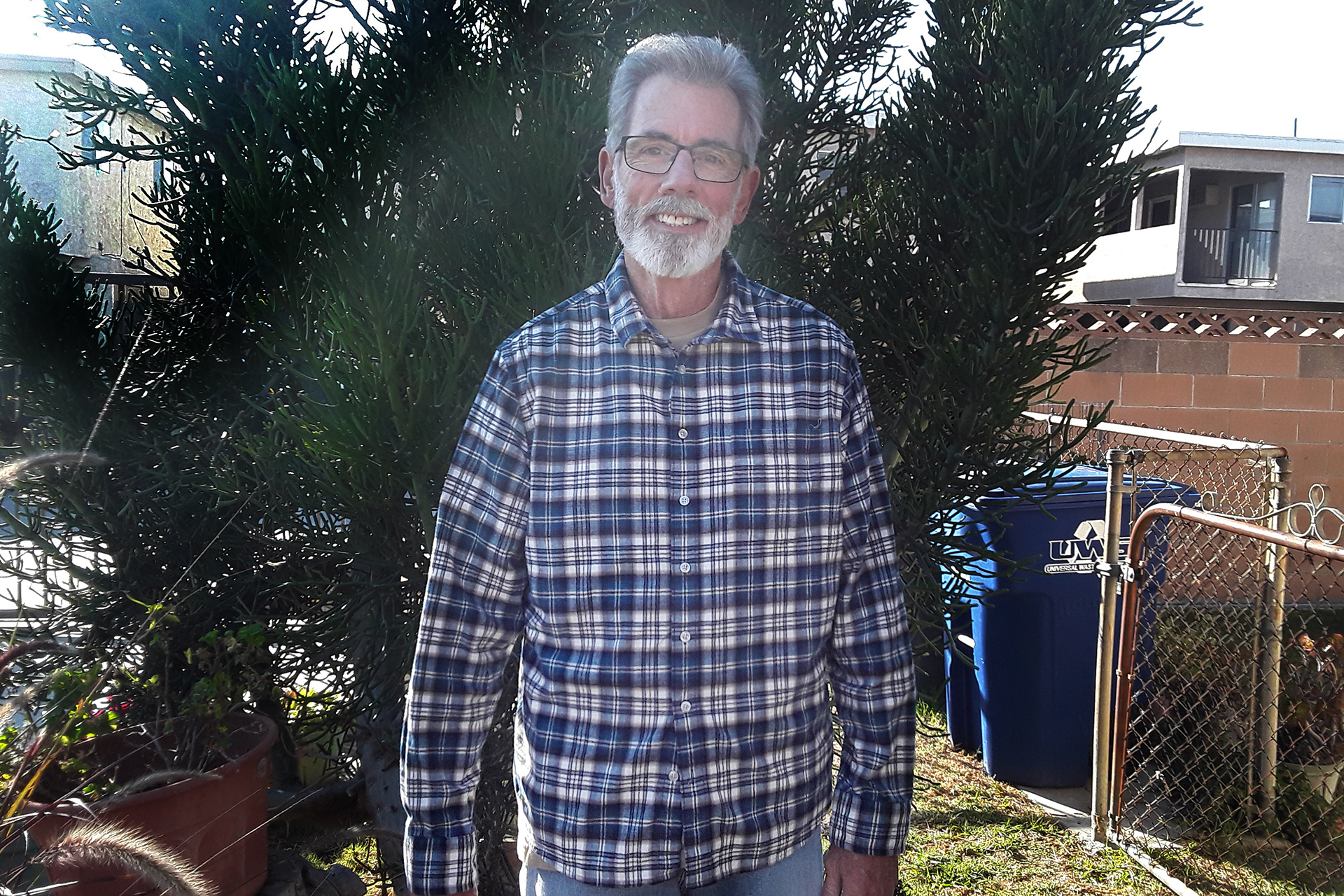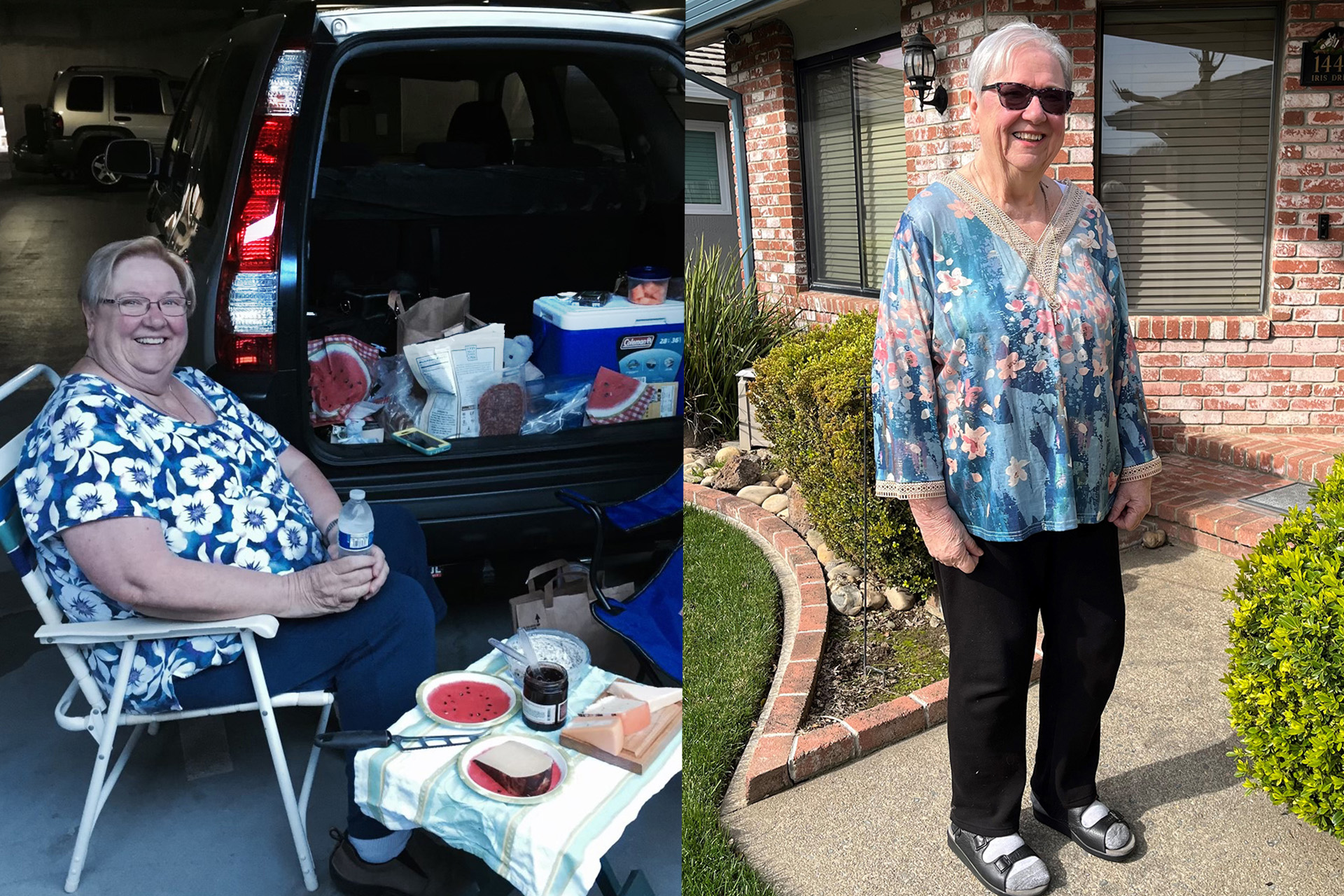Hospice volunteer Joan Buckland, 72, listened to Joni Mitchell “on full blast” with one patient while they danced. With another, she pulled weeds as he watched in the shade of the backyard that he loved but was too ill to garden anymore.
While volunteer Mike Spillane, 69, sat with one woman, he would also spend time with her sister, who had Alzheimer’s. When the patient died and her sister was moved to a care unit, the family asked Spillane if he would visit her.
And he did.
Hospice volunteers give to others at the end of their lives. But according to Buckland and Spillane, they get back just as much.
Hospice is comfort and care
Hospice isn’t designed to cure a terminal disease. But taking place in a variety of locations, such as a home, a facility, a hospital, or an inpatient unit, it can keep a patient safe and comfortable.
At Kaiser Permanente, hospice patients have a team, including physicians, nurses, social workers, spiritual care counselors, home health aides, and bereavement coordinators, and can also include other clinicians such as a dietitian or a physical therapist as needed.
And they often include a volunteer.
“Hospice dates back thousands of years. It comes from the Latin term hospitum,” said David Ainsworth, RN, the regional service director for Northern California Hospice who works with both internal and external hospice agencies. “Jumping ahead to the modern age of hospice, Medicare started hospice benefit in the 1980s and at the same time there was growing professional and public interest in the field of death and dying. Initially hospices were run by volunteers.”
Understanding hospice volunteering
According to Ainsworth, the onboarding process to become a Kaiser Permanente hospice volunteer includes completing an application, providing references, ensuring immunizations are up to date, and attending training sessions.
It’s comprehensive by necessity because “you’re going into a variety of patient homes with lots of unknowns you can’t control like you can in a hospital,” he said.
Volunteers don’t provide medical care, personal care such as bathing, or do heavy housework. Instead, they supply companionship, do light household chores, give caregivers a break, and support other hospice staff. Volunteer coordinators based in Kaiser Permanente agencies match patients with volunteers as a part of the larger hospice plan of care.
“Many volunteers are former nurses, social workers, and clinicians who want to give back to Kaiser Permanente and to their community,” Ainsworth said.
The tale of 2 volunteers
Mike Spillane is retired from commercial wholesale work and lives in Los Alamitos, California. When his wife was dying of cancer, the couple had more friends and family volunteering to help them than they could even use. That experience made Spillane “want to help others who didn’t have such an extensive support system.”
Spillane began volunteering in 2019. He’s organized hospice supplies, assembled nurse bags, called patients for wellness check-ins, and volunteered at bedside. Already he has many treasured memories, ranging from swapping military service tales with patients who are fellow veterans, to how he once wrote a letter to a hospice patient every other week for the remainder of the man’s life. (“I also read to people,” he said. “Everyone loves The Hobbit.”)
Joan Buckland, a retiree in Fremont, California, spent the first 20 years of her 30-year Kaiser Permanente career working at one of its first hospice programs. Although at the time her mother said she was “too young to work with death and dying,” Buckland loved her job.
She volunteers with patients between 1 and 4 hours a week. Her patients’ ages have ranged from 36 to 92. In the rare instance she needs advice, she calls the hospice volunteer coordinator.
Asked for the most profound moment in her 13 years volunteering, Buckland said it was with a patient with dementia whose son had brought her to a residential care facility. “No family or friends visited. I just held her hand as she died. It was such a privilege. In her last moments, she wasn’t alone.”
Contact monica.j.neville@kp.org to learn more about volunteering.





This Post Has 0 Comments